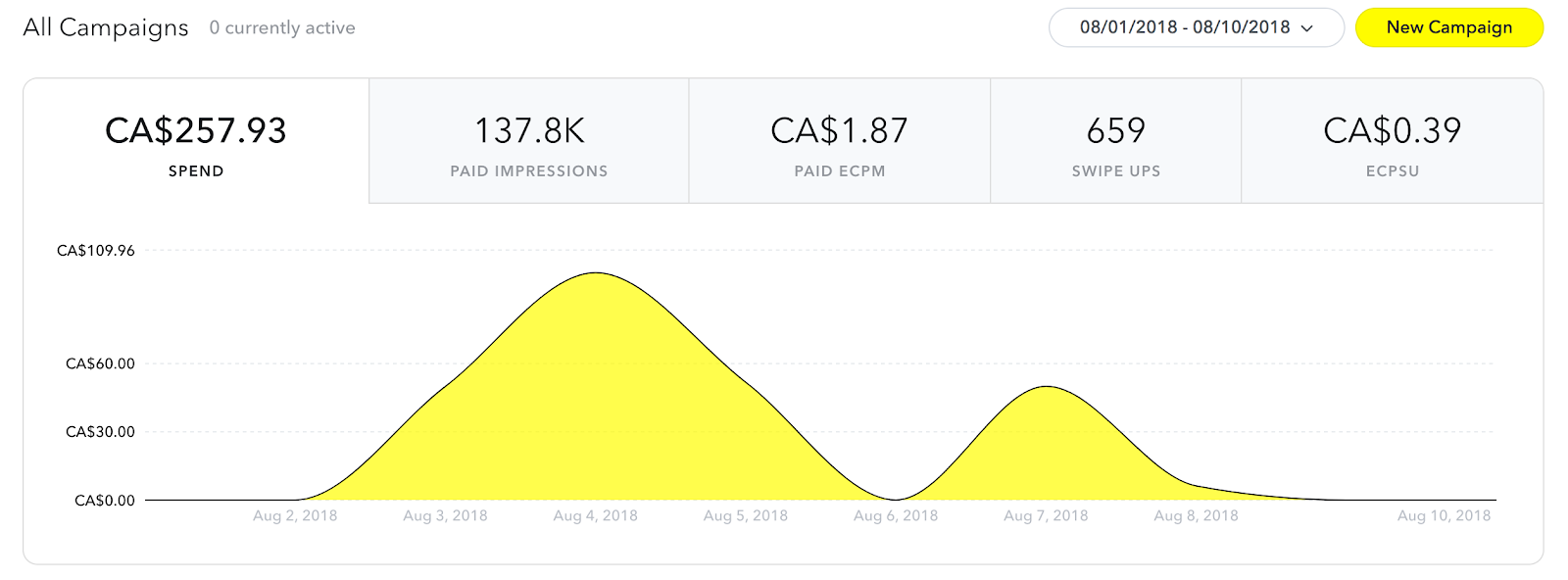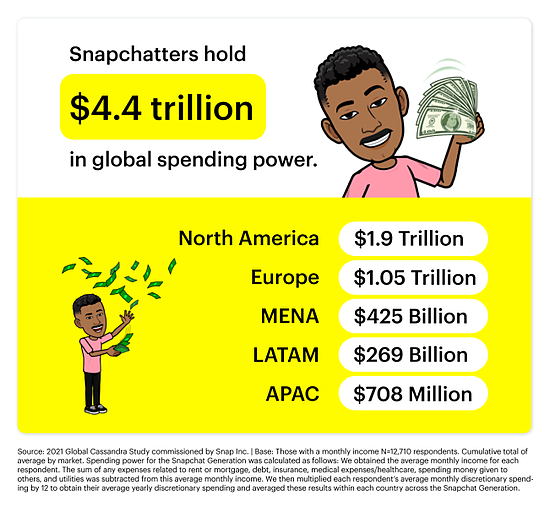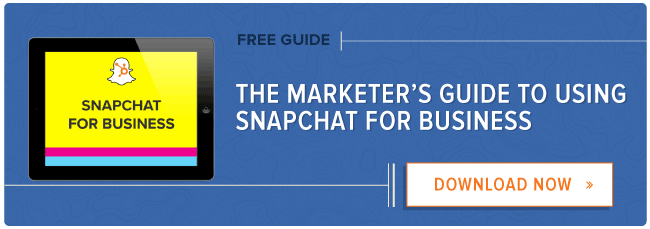In March 2017, Snap Inc., the parent company of the popular social media app Snapchat, went public. To meet revenue expectations, they opted into a self-service ads model, as opposed to direct sales.
It’s no question Snapchat is a popular platform — in the U.S. alone, 87.3 million people use the app. Given this, marketers may be curious about using Snapchat to meet marketing goals, and the advertising options available on the platform.
In this post, discover the benefits that can come from using Snapchat, whether the platform will help you meet your business goals, and a case study from my experimentation on the platform.
Advertising on Snapchat
While it is not as new and emerging as TikTok, Snapchat is not exactly a B2B platform, so you may be skeptical about using it to meet your marketing goals.
Marketers can create and leverage various types of Snapchat Ads on the platform Like AR experiences, unique business filters for photo overlays, and even 3-minute long commercials. These ads can be used for a variety of different purposes, like general brand awareness, driving sales, or driving website traffic.
Many people may compare the platform to Facebook, but there’s a significant difference between the two products. Although Facebook’s ads and targeting tools are more robust, Snapchat’s creative studio puts an emphasis on design. While Facebook’s Business Manager can feel initially overwhelming, Snapchat offers a tool that will guide you through the process of getting your campaign up and running.
Additionally, Snapchat offers templates for creating ads, which can be helpful for businesses that don’t have teams responsible for making creative assets or videos. You can choose from specific templates and create what works best for you, and businesses of all sizes can leverage the tool to build ads and create product catalogs to share with their target audiences.
Let’s go over some statistics that explain additional facts about advertising on Snapchat.
1. The largest audiences on Snapchat globally are females between the ages of 13-17 and males between 25 and 34.
Millennials are currently the generation with the most significant purchasing power. Many users in Gen Z are approaching ages where they can begin making purchases for themselves or have already begun to do so. Given this, leveraging Snapchat gives you an in with the generations with significant spending power. In fact,
2. Snapchatters hold $4.4 trillion in global spending power.
The opportunity to generate revenue on the app is high, especially when advertising products and services.
3. Foresight Factory Research predicts that in 2025 we’ll see a 37% increase in the proportion of U.S. Gen Z shoppers that use AR before buying a product.
Snapchat has unique AR tools that set it apart from other social media apps. If you leverage this in your Snapchat Ads strategy, you’ll meet a significantly large audience desire and stay up on the trends.
4. Snapchatters are 63% more likely than non-Snapchatters to have purchased a product in the last month via a mobile device.
If you’re selling a product on Snapchat, your audience is likely less hesitant to make purchases on social media apps and may be ready to do so again.
5. Snapchat commercials have 5x higher ad awareness than other mobile video ads.
This statistic shows that the video you create on Snapchat can attract more customers than the ads you make on other platforms.
Let’s go over an experiment I ran for my business on Snapchat to test out the platform.
42 Agency: A Snapchat Case Study
When I first started exploring Snap Ads, I was a little skeptical whether or not it could work for 42 Agency. Snap is not exactly a B2B platform, and, to my knowledge, didn’t have deep targeting options for companies working on Demand Generation or Growth projects.
For my purposes, I decided to run a simple web traffic objective campaign (Snap also supports app installs, engagement, and other objectives). I wanted to target business-specific audiences, so I focused my efforts on ages 27 and up.

I was impressed with the targeting options available on Snap Ads. Snap has similar categories to Facebook, available from Experian & Datalogix (income, occupation and such), albeit not as exhaustive as Facebook. However, these targeting options are available for the U.S. only. Along with Advanced Demographics, Snapchat’s ad targeting includes options for TV viewing, purchase behavior, lifestyles, and more.
Overall here are the campaign stats:

In this case, the “Swipe Ups” measure click-through rate. Rather than using a click-through link, Snap’s product urges users to “Swipe Up” from the bottom to view the destination URL. In my opinion, this creates higher intent and less risk of mistaken clicks than Facebook or Twitter mobile ads.
If you’re still on the fence, here’s a summary of when you should consider using Snapchat and when your marketing efforts may be best spent elsewhere.
Should You Advertise On Snapchat? A Final Verdict
There is no right or wrong answer to the question of whether or not you should advertise on Snapchat, as most businesses can find success on the platform. You can easily segment your audience, upload your assets, set a campaign goal, and drive results. In addition, it’s less risky than TikTok simply because of the variety of advertising options available.
If you’re a SaaS business, you can easily create commercials advertising your products and services. If you’re a clothing retailer, you can create product catalogs so users can see what you have to offer within the app. If you’re a dog groomer, you can use location targeting to get brand awareness for your business among local audiences.
Given this, there really is no set rule for which businesses can and cannot advertise on Snapchat. However, it is essential to the companies that do advertise on the platform to consider the following:
- If your audience isn’t younger Gen Z or older Millennials, your audience likely won’t be on the platform. However, if you do, you’ll expose your content to an audience with significant purchasing power.
- Snapchat is a visual-focused platform and, if you can’t create unique brand assets, like images and videos, it will be hard to meet audience expectations.
- If you don’t have an existing social media marketing strategy for other platforms, it may not be best to focus your efforts on the platform as it is more unique than Instagram or Facebook.
If you’re looking for more information, let’s go over an experiment I ran for my business on Snapchat to test out the platform.
Ultimately, the decision to use Snapchat in your marketing strategy depends on your overall marketing goals and target audiences. Consider the benefits listed above that it can bring to your business, and decide whether it fit into your strategy.


